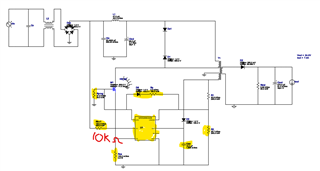I received the design from the TI Webench and laid out the circuit on a PCB. When i built up the board I was not seeing the DRV switching. I troubleshot this for a while and decided to build up a second PCB with minimal components installed. Below is the original design from TI Webench and highlighted parts that were installed on my second PCB.

On the second PCB i installed only the low voltage components highlighted above (the HV resistor was changed to a 10k ohm to reduce the need for higher voltage on the PCB to startup) and applied a 16.5VDC voltage to the HV pin (on both either side of the 10k resistor to this pin to see what would happen) and 15V to the VDD. I never saw any pulsing at the DRV pin.
Could you please help me figure out why i was not seeing any lulses at the DRV, including the exploratory pulses?
Thank you,


